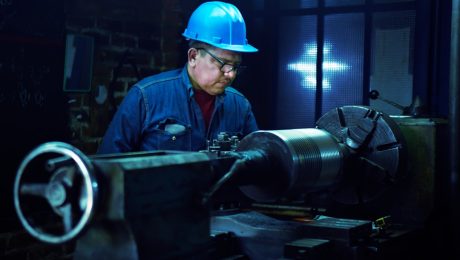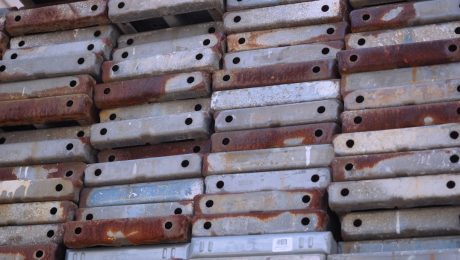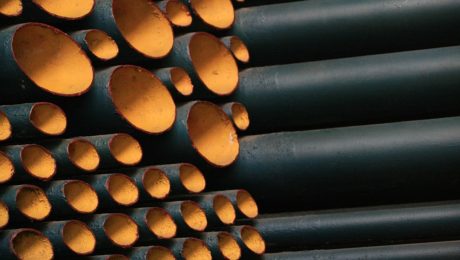The steel industry, long associated with high energy consumption and carbon emissions, is undergoing a remarkable transformation. Driven by environmental concerns and the need for sustainable solutions, the development and adoption of energy-efficient steel products are gaining significant momentum. This post delves into the various aspects of this exciting evolution, highlighting the innovations that are paving the way for a greener future.
1. The Energy Footprint of Traditional Steel Production: Understanding the Challenge
Traditional steelmaking is an energy-intensive process. The primary method, the basic oxygen furnace (BOF) process, relies heavily on coke (a fuel derived from coal) for heat generation. This process not only consumes vast amounts of energy but also releases significant quantities of greenhouse gases, primarily carbon dioxide. The production of iron ore pellets and the subsequent rolling and shaping of steel also contribute to the overall energy demand. Understanding this substantial energy footprint is the first step towards developing effective solutions.
Furthermore, the transportation of raw materials and finished products adds to the environmental impact. The sheer volume of materials involved in steel production necessitates efficient logistics and transportation methods to minimize the carbon footprint associated with this aspect of the supply chain. This includes exploring options like using more fuel-efficient vehicles and optimizing transportation routes.
2. Innovative Steelmaking Processes: Reducing Energy Consumption
Significant advancements are being made in steelmaking technologies to reduce energy consumption and carbon emissions. Electric arc furnaces (EAFs), for example, utilize electricity rather than coke as the primary heat source. These furnaces can significantly reduce CO2 emissions, particularly when powered by renewable energy sources. The increasing use of scrap steel as a raw material in EAFs further contributes to energy savings and reduced reliance on virgin iron ore.
Hydrogen-based steelmaking is another promising area of research and development. Replacing coke with hydrogen as a reducing agent in the steelmaking process would dramatically reduce greenhouse gas emissions. While still in its early stages, this technology holds the potential to revolutionize the steel industry and create a truly sustainable steel production process. Other advancements include the optimization of existing processes through improved efficiency and waste reduction strategies.
3. Energy-Efficient Steel Grades and Alloys: Optimizing Material Properties
The development of advanced steel grades and alloys with enhanced properties allows for lighter and stronger materials, leading to energy savings in downstream applications. High-strength low-alloy (HSLA) steels, for instance, offer superior strength-to-weight ratios compared to conventional steels, allowing for the use of less material in construction and automotive applications, thereby reducing overall weight and fuel consumption.
Furthermore, the development of advanced high-strength steels (AHSS) is pushing the boundaries of material performance. These steels exhibit exceptional strength and formability, enabling the design of lighter and more fuel-efficient vehicles. The use of these advanced materials contributes to significant reductions in energy consumption throughout the lifecycle of the product.
4. Sustainable Steel Applications: Minimizing Environmental Impact Across Industries
The use of energy-efficient steel products extends beyond just the production process. Their application in various industries contributes to overall energy savings and environmental benefits. In the construction industry, lighter and stronger steels reduce the amount of material needed for buildings and infrastructure, leading to lower transportation costs and reduced embodied energy.
In the automotive sector, the widespread adoption of high-strength steels has resulted in lighter vehicles, improving fuel efficiency and reducing greenhouse gas emissions from transportation. Similarly, in the energy sector, energy-efficient steel is used in the construction of wind turbines and other renewable energy infrastructure, contributing to a more sustainable energy system.
5. Lifecycle Assessment and the Future of Energy-Efficient Steel
A complete understanding of the environmental impact of steel requires a comprehensive lifecycle assessment (LCA). This approach considers the energy consumption and emissions associated with every stage of the steel’s life, from raw material extraction to manufacturing, transportation, use, and end-of-life management. By conducting LCAs, manufacturers can identify areas for improvement and optimize the sustainability of their steel products.
The future of energy-efficient steel is bright. Continued research and development, coupled with government policies promoting sustainable practices, will accelerate the adoption of innovative technologies and drive further reductions in the environmental impact of steel production. The transition towards a circular economy, where steel is recycled and reused, will also play a crucial role in minimizing waste and conserving resources. This collaborative approach will ensure that steel, a vital material for modern society, plays a sustainable role in shaping a greener future.
Tags: Energy-efficient steel, Sustainable steel, Green steel, Steel recycling, Electric arc furnace
The steel industry is a complex ecosystem demanding efficiency and precision. GlobalSteel, a leading provider of steel industry solutions, offers a suite of powerful web tools designed to simplify and optimize various aspects of your business. This comprehensive guide will delve into the key features and benefits of leveraging these tools, transforming your operations from reactive to proactive.
Streamlining Steel Procurement with GlobalSteel’s Platform
One of the most significant advantages of GlobalSteel’s web tools is their ability to revolutionize steel procurement. The platform provides access to a vast network of suppliers, allowing you to compare prices, specifications, and delivery times with ease. This centralized system eliminates the need for manual searches across multiple vendors, saving valuable time and resources. Advanced search filters allow you to refine your search based on specific grade, size, quantity, and location requirements, ensuring you find the perfect match for your needs. Furthermore, the platform often includes real-time pricing updates, providing greater transparency and enabling more informed purchasing decisions. Integrated communication tools allow for seamless interaction with suppliers, facilitating faster negotiations and order confirmations.
Effective Inventory Management Using GlobalSteel’s Data Analytics
Effective inventory management is crucial for minimizing storage costs and preventing stockouts. GlobalSteel’s web tools provide robust inventory tracking capabilities, offering real-time visibility into your stock levels. This data-driven approach allows for accurate forecasting of future demand, enabling proactive ordering and preventing costly overstocking or shortages. The platform often incorporates sophisticated analytics tools that identify trends and patterns in your inventory usage, providing valuable insights for optimizing your stock management strategies. Automated alerts notify you of low stock levels or approaching expiration dates, minimizing the risk of disruptions in your production process. This granular level of control over your inventory contributes significantly to reduced waste and improved operational efficiency.
Leveraging GlobalSteel’s Real-Time Steel Pricing Data
Fluctuations in steel prices can significantly impact profitability. GlobalSteel’s web tools provide access to real-time steel pricing data, empowering you to make informed decisions based on current market conditions. This data is typically sourced from multiple reliable sources, providing a comprehensive and accurate picture of the market. By staying abreast of price trends, you can optimize your purchasing strategies, negotiate favorable contracts, and mitigate potential risks associated with price volatility. The platform may also offer historical price data, allowing for trend analysis and more accurate forecasting of future price movements. This feature is invaluable for long-term planning and strategic decision-making.
Improving Supply Chain Visibility and Collaboration
GlobalSteel’s web tools promote transparency and collaboration throughout your supply chain. The platform facilitates seamless communication between you, your suppliers, and your customers. Real-time tracking of orders allows you to monitor the progress of shipments, ensuring timely delivery and minimizing delays. The ability to share documents and updates electronically streamlines communication and eliminates the need for time-consuming email exchanges. This enhanced visibility and collaboration reduces the risk of misunderstandings and improves overall supply chain efficiency. Integrated reporting tools provide a clear overview of your supply chain performance, allowing you to identify areas for improvement and optimize your processes.
Boosting Operational Efficiency Through GlobalSteel’s Integrated Tools
GlobalSteel’s web tools are designed to be integrated and user-friendly. The platform often offers a single point of access to all the essential tools you need for managing your steel operations. This streamlined approach reduces the need for switching between multiple systems, improving efficiency and reducing the risk of errors. The user-friendly interface makes it easy to navigate the platform and access the information you need quickly. Many platforms also offer customizable dashboards, allowing you to tailor the interface to your specific needs and preferences. This integrated approach to steel management contributes significantly to overall operational efficiency and cost savings.
By leveraging the full potential of GlobalSteel’s web tools, businesses in the steel industry can significantly enhance their operational efficiency, improve decision-making, and gain a competitive edge. The integrated approach, real-time data, and collaborative features combine to create a powerful solution for streamlining every aspect of your steel operations.
SEO-Friendly Tags:
- GlobalSteel Web Tools
- Steel Industry Software
- Steel Procurement Software
- Steel Inventory Management
- Supply Chain Optimization Steel
In today’s competitive landscape, operational efficiency isn’t just a desirable trait – it’s a necessity for survival and growth. Businesses that can streamline their processes, optimize resource allocation, and consistently deliver high-quality output are better positioned to thrive. This comprehensive guide explores key strategies to significantly improve your operational efficiency.
1. Streamlining Your Workflows: Identifying and Eliminating Bottlenecks
Workflow optimization is the cornerstone of improved operational efficiency. Start by meticulously mapping your current processes. Identify every step involved, from start to finish, for each key operation. Look for bottlenecks – points where work slows down or gets stuck. These bottlenecks are often caused by inefficient processes, inadequate resources, or unclear responsibilities. Once identified, analyze the root causes of these bottlenecks. Are there redundant steps? Is there a lack of communication between departments? Is technology hindering rather than helping?
Solutions might include automating repetitive tasks using software, improving communication channels through project management tools, clarifying roles and responsibilities, or investing in new equipment or technology. Regularly review and update your workflows to account for changes in the business environment and employee feedback. The goal is to create a smooth, seamless flow of work that minimizes delays and maximizes productivity.
2. Leveraging Technology for Automation and Optimization
Technology plays a crucial role in modern operational efficiency. Automation tools can significantly reduce manual effort, minimizing errors and freeing up employees for more strategic tasks. Consider implementing Customer Relationship Management (CRM) systems to streamline customer interactions, Enterprise Resource Planning (ERP) software to integrate various business functions, or Robotic Process Automation (RPA) to automate repetitive administrative tasks.
Beyond automation, data analytics tools can provide valuable insights into operational performance. By analyzing key performance indicators (KPIs), you can identify areas for improvement, predict potential problems, and make data-driven decisions to optimize processes. Investing in the right technology is a long-term investment that pays off handsomely in increased efficiency and reduced costs.
3. Optimizing Resource Allocation: Maximizing Efficiency and Minimizing Waste
Efficient resource allocation is critical for operational success. This includes optimizing the use of human resources, financial resources, and physical assets. Start by analyzing your current resource utilization. Are your employees working at full capacity? Are your machines operating efficiently? Are your materials being used effectively? Identify any underutilized resources and explore ways to better allocate them.
Implement strategies like cross-training employees to handle multiple tasks, optimizing inventory management to minimize waste, and regularly maintaining equipment to prevent downtime. Consider outsourcing non-core functions to free up internal resources and focus on your core competencies. Regularly review and adjust your resource allocation strategy to adapt to changing demands and optimize your overall efficiency.
4. Empowering Employees: Fostering a Culture of Continuous Improvement
Operational efficiency isn’t just about processes and technology; it’s also about people. Empowering your employees to contribute to continuous improvement is crucial. Create a culture where employees feel comfortable identifying problems, suggesting solutions, and participating in decision-making processes. Provide them with the training and resources they need to excel in their roles and contribute to the overall efficiency of the organization.
Implement regular feedback mechanisms, such as employee surveys and performance reviews, to gather insights and identify areas for improvement. Recognize and reward employees who contribute to increased efficiency. By fostering a culture of collaboration and continuous improvement, you can unlock the full potential of your workforce and drive significant improvements in operational efficiency.
5. Measuring and Monitoring Performance: Tracking Progress and Identifying Opportunities
Regularly measuring and monitoring your operational efficiency is essential to track progress and identify areas for improvement. Establish clear KPIs that align with your business objectives. These KPIs should be measurable, achievable, relevant, and time-bound (SMART). Track these KPIs regularly and analyze the data to identify trends and patterns. This data will provide valuable insights into your operational performance and highlight areas where improvements are needed.
Use dashboards and reporting tools to visualize your KPIs and make it easy to track progress. Regularly review your performance data with your team to identify opportunities for improvement and celebrate successes. By consistently monitoring your performance, you can ensure that your efforts to improve operational efficiency are yielding positive results.
Improving operational efficiency is an ongoing process, not a one-time event. By implementing these strategies and continuously monitoring your progress, you can unlock significant growth and achieve lasting success.
Tags: operational efficiency, process improvement, business optimization, productivity, workflow automation
Steel, a ubiquitous material, continues to be a cornerstone of modern construction, infrastructure, and manufacturing. Its strength, durability, and versatility make it an ideal solution for a wide range of engineering challenges. This post delves into several compelling case studies showcasing the remarkable applications of steel and highlighting its enduring impact on our world.
1. Skyscraper Construction: Reaching New Heights with Steel
The construction of skyscrapers relies heavily on steel’s exceptional strength-to-weight ratio. Consider the Burj Khalifa, the world’s tallest building. Its intricate steel framework, a marvel of engineering, supports the immense weight of the structure and withstands extreme wind loads. The use of high-strength steel allowed for a slender design, maximizing usable space while minimizing material usage. The precise fabrication and assembly of the steel components were crucial to the project’s success, demonstrating the importance of meticulous planning and execution in large-scale steel projects. Furthermore, innovations in steel design, such as the use of advanced computer modeling and optimized connections, have allowed for even taller and more complex structures to be built. The case of the Burj Khalifa exemplifies the crucial role steel plays in pushing the boundaries of architectural design.
2. Bridge Engineering: Spanning Gaps with Steel’s Resilience
Bridges represent another significant area where steel solutions are indispensable. The Golden Gate Bridge, an iconic symbol of San Francisco, showcases the power and elegance of steel in bridge construction. Its suspension design, utilizing massive steel cables and towers, allows it to span a significant distance across the water. The bridge’s longevity and resilience to seismic activity are testaments to the durability and strength of steel. Modern bridge designs continue to leverage steel’s properties, incorporating innovative techniques like high-performance steel and advanced welding technologies. The Akashi Kaikyō Bridge in Japan, currently the world’s longest suspension bridge, exemplifies the ongoing evolution of steel bridge construction. The use of steel allows for longer spans, lighter structures, and greater resistance to various environmental factors, making it a preferred material for bridge builders across the globe.
3. Automotive Manufacturing: Steel’s Role in Safety and Efficiency
The automotive industry relies heavily on steel for its strength, formability, and cost-effectiveness. High-strength low-alloy (HSLA) steels are commonly used in car bodies to improve crashworthiness and occupant safety. Advanced high-strength steels (AHSS) are increasingly being incorporated to further enhance strength and reduce weight, leading to improved fuel efficiency. The development of tailored blank technology, where different steel grades are combined in a single component, allows for optimized strength and weight distribution. This innovative approach demonstrates the ongoing evolution of steel in the automotive sector, continuously driving improvements in safety, performance, and environmental impact. The adoption of these advanced steel solutions is a testament to the industry’s commitment to safety and sustainability.
4. Infrastructure Development: Steel’s Contribution to Sustainable Solutions
Steel plays a vital role in infrastructure development, from railways and pipelines to power transmission towers and wind turbine structures. Steel railway tracks provide reliable and durable transportation networks, while steel pipelines transport essential resources like water, gas, and oil across vast distances. The construction of wind turbine towers requires high-strength steel to withstand considerable wind loads, contributing to the growth of renewable energy infrastructure. Furthermore, steel’s recyclability makes it a sustainable choice for infrastructure projects, reducing environmental impact and promoting circular economy principles. The use of steel in infrastructure is not just about strength and durability but also about long-term sustainability and economic viability.
5. Offshore Oil and Gas Platforms: Withstanding Extreme Conditions with Steel
The harsh conditions of offshore environments demand materials with exceptional strength and corrosion resistance. Steel, particularly high-strength steel and specialized corrosion-resistant alloys, is the material of choice for constructing offshore oil and gas platforms. These structures must withstand extreme weather conditions, including high winds, waves, and ice. The design and fabrication of these platforms require sophisticated engineering expertise and meticulous attention to detail. The use of advanced welding techniques and non-destructive testing methods ensures the structural integrity and safety of these vital installations. The success of offshore oil and gas operations relies heavily on the resilience and dependability of steel structures, showcasing its ability to perform in the most challenging environments.
In conclusion, these case studies demonstrate the versatility and enduring importance of steel in a wide range of applications. Its strength, durability, and recyclability make it an indispensable material for modern engineering and construction. As technology advances, so too will the innovative applications of steel, continuing to shape our built environment and drive progress in various industries.
SEO Tags: Steel solutions, case studies steel, steel construction, engineering marvels, steel applications
Offering a wide product range can be a double-edged sword. While it presents significant opportunities for growth and increased customer satisfaction, it also introduces complexities in inventory management, marketing, and overall business strategy. This comprehensive guide delves into the intricacies of managing a diverse product portfolio, helping you harness its potential while mitigating potential challenges.
1. The Allure of Breadth: Why Offer a Wide Product Range?
A broad product selection offers several compelling advantages. Firstly, it caters to a wider customer base, attracting individuals with diverse needs and preferences. This diversification reduces reliance on a single product or market segment, making your business more resilient to fluctuations in demand. A wider range can also enhance your brand image, positioning you as a one-stop shop and a leader in your industry. This perceived authority can boost customer trust and loyalty. Furthermore, a diverse portfolio allows for cross-selling and upselling opportunities, increasing average order value and overall revenue. Finally, a wider range can help you fill gaps in the market, capitalizing on unmet consumer needs and establishing a competitive edge.
2. Inventory Management: The Backbone of a Successful Wide Product Range
Managing inventory effectively is paramount when dealing with a vast product range. Inefficient inventory management can lead to stockouts, resulting in lost sales and dissatisfied customers. Conversely, overstocking ties up capital and increases storage costs. Implementing a robust inventory management system, whether through dedicated software or a carefully designed spreadsheet system, is crucial. This system should track stock levels in real-time, forecast demand accurately, and automate reordering processes. Consider using ABC analysis to prioritize inventory management efforts on high-value items. Regular stock audits and cycle counting help maintain accuracy and identify discrepancies. Efficient warehousing and logistics are also key components of successful inventory management for a wide product range.
3. Targeted Marketing: Reaching the Right Customers with the Right Products
With a diverse product portfolio, a blanket marketing approach is unlikely to be effective. Instead, you need a targeted marketing strategy that segments your customer base and tailors your messaging to resonate with specific groups. Market research is essential to understand customer demographics, preferences, and buying behaviors. This information can be used to create personalized marketing campaigns across various channels, including email, social media, and paid advertising. Consider using data analytics to track the effectiveness of your campaigns and optimize your spending. A well-defined customer segmentation strategy ensures that your marketing efforts are efficient and cost-effective, maximizing return on investment.
4. Pricing Strategies: Balancing Profitability and Competitiveness
Pricing a wide range of products requires a strategic approach. A consistent pricing strategy across the board may not be optimal, as different products will have varying costs, demand, and competitive landscapes. Consider implementing different pricing strategies for different product categories. Value-based pricing, cost-plus pricing, and competitive pricing are all viable options, depending on your specific products and market conditions. Analyzing your competitor’s pricing can help you determine a competitive yet profitable price point for each item. Regularly reviewing and adjusting your pricing strategy based on market feedback and sales data is crucial for maintaining profitability and market share.
5. Scaling and Growth: Strategies for Managing Expansion
As your business grows and your product range expands, you’ll need to adapt your operations and processes to handle the increased complexity. This might involve investing in new technology, hiring additional staff, or outsourcing certain functions. Scaling your inventory management system is crucial to maintain efficiency as your product catalog grows. Consider adopting cloud-based solutions for greater flexibility and scalability. Automating various processes, such as order fulfillment and customer service, can free up resources and improve efficiency. Strategic partnerships can also play a vital role in scaling your business, allowing you to leverage external expertise and resources. Regularly reassessing your business model and adapting to changing market conditions is essential for sustained growth.
Managing a wide product range presents unique challenges, but the potential rewards are substantial. By implementing the strategies outlined above, you can successfully navigate the complexities of a diverse product portfolio and achieve significant business success.
SEO Tags:
Wide product range, inventory management, targeted marketing, pricing strategies, business growth
body {
font-family: sans-serif;
line-height: 1.6;
}
h1, h2, h3 {
color: #333;
}
img {
max-width: 100%;
height: auto;
}
Harnessing the power of the sun is a significant step towards a sustainable future. But before you can enjoy the benefits of solar energy, you need a robust and reliable system to mount your solar panels. Choosing the right mounting system is crucial for the efficiency, longevity, and safety of your solar installation. This comprehensive guide will explore the various options available, helping you make an informed decision.
1. Understanding the Different Types of Solar Panel Mounting Systems
Solar panel mounting systems can be broadly categorized into several types, each suited to different roof types, panel orientations, and site conditions. The primary categories include:
- Roof-Mounted Systems: These are the most common type and further divided into:
- Rack Mounting Systems: These systems use pre-assembled racks that attach directly to the roof, offering flexibility and ease of installation. They are suitable for various roof types, including asphalt shingles, tile roofs, and metal roofs.
- Integrated Mounting Systems: These systems are designed to be seamlessly integrated into the roof during construction, often incorporating the panels into the roofing material itself. While aesthetically pleasing and potentially more durable, they are generally more expensive and require planning during the initial roof design phase.
- Ground-Mounted Systems: These systems are ideal for larger solar installations, open spaces, or areas where roof mounting isn’t feasible. They typically involve driving posts or using concrete foundations to support the solar panel array.
- Pole-Mounted Systems: These systems utilize poles to elevate the solar panels, often used in areas with limited ground space or where shading is a concern. They are commonly seen in commercial or utility-scale solar farms.
- Floating Systems: This innovative approach involves mounting solar panels on bodies of water, taking advantage of otherwise unused space. They require specialized designs and engineering considerations.
2. Factors Influencing Your Choice of Mounting System
Selecting the appropriate mounting system depends on several crucial factors:
- Roof Type: The material and condition of your roof significantly impact the suitability of different mounting systems. Tile, metal, and shingle roofs each require specific mounting hardware and techniques.
- Roof Angle and Orientation: Optimizing the angle and orientation of your solar panels is critical for maximizing energy production. The mounting system must support the desired angle and direction.
- Structural Integrity of the Roof: The roof must be able to support the weight of the solar panels and the mounting system. A structural assessment may be necessary, especially for older or less robust roofs.
- Local Building Codes and Regulations: Compliance with local building codes and regulations is essential. These codes often specify requirements for mounting systems, including wind load and snow load considerations.
- Budget: Mounting systems vary considerably in cost, influencing the overall project budget. Factors like material, complexity, and labor costs all contribute to the final price.
- Aesthetics: The visual impact of the mounting system should also be considered, particularly for residential installations. Some systems are designed to be more discreet than others.
3. Installation Considerations for Solar Panel Mounting Systems
Proper installation is paramount for the safety and performance of your solar energy system. Key considerations include:
- Professional Installation: It’s highly recommended to hire qualified and experienced solar installers to ensure the mounting system is installed correctly and safely.
- Grounding and Electrical Connections: Proper grounding and electrical connections are crucial for safety and to prevent electrical hazards.
- Wind and Snow Loads: The mounting system must be able to withstand the expected wind and snow loads in your area. This often requires specific engineering calculations and appropriately sized components.
- Corrosion Protection: Materials used in the mounting system should be resistant to corrosion, especially in areas with high humidity or exposure to saltwater.
- Maintenance and Inspection: Regular inspection and maintenance of the mounting system are crucial for ensuring its longevity and continued performance.
4. Choosing the Right Materials for Your Mounting System
The materials used in solar panel mounting systems significantly impact their durability, longevity, and resistance to environmental factors. Common materials include:
- Aluminum: A lightweight yet strong material, offering excellent corrosion resistance. It’s widely used in many mounting systems.
- Stainless Steel: Provides superior strength and corrosion resistance, particularly in harsh environments. However, it’s generally more expensive than aluminum.
- Galvanized Steel: A cost-effective option offering good corrosion resistance, but may require additional protective coatings in certain climates.
The choice of material often depends on the specific application, environmental conditions, and budget constraints.
5. Maximizing Efficiency with Your Solar Mounting System
To maximize the efficiency of your solar energy system, careful consideration should be given to several aspects of the mounting system:
- Panel Spacing and Shading: Proper spacing between panels minimizes shading, ensuring each panel receives optimal sunlight.
- Optimum Tilt Angle: The tilt angle of the panels should be optimized for your latitude and the sun’s path throughout the year. This can involve adjustable mounting systems.
- Microinverters or Optimizers: These devices can optimize the performance of individual panels, even if some are partially shaded or experiencing different levels of sunlight.
- Regular Cleaning: Regular cleaning of the solar panels is essential to remove dirt, dust, and debris that can reduce energy production.
By carefully considering these factors and choosing the right mounting system, you can ensure a safe, efficient, and long-lasting solar energy installation.
SEO-Friendly Tags:
- Solar Panel Mounting Systems
- Solar Panel Installation
- Roof Mounted Solar Panels
- Ground Mounted Solar Panels
- Solar Panel Mounting Hardware
body { font-family: sans-serif; line-height: 1.6; }
h1, h2, h3 { color: #333; }
h1 { font-size: 2.5em; }
h2 { font-size: 2em; }
h3 { font-size: 1.5em; }
Choosing the right steel supplier can significantly impact your project’s success, from cost-effectiveness to timely completion. A poorly chosen supplier can lead to delays, quality issues, and ultimately, financial losses. This comprehensive guide will walk you through the key aspects to consider when evaluating potential steel suppliers, ensuring you make an informed decision that supports your business goals.
1. Assessing Steel Quality and Certifications
The foundation of any successful steel procurement strategy is unwavering quality. Don’t just rely on claims; delve deep into the supplier’s quality control procedures. Look for certifications such as ISO 9001 (quality management), ISO 14001 (environmental management), and industry-specific certifications relevant to your steel grade (e.g., certifications for aerospace-grade steel). Request copies of their quality control reports and test results to verify their adherence to standards. Inquire about their traceability systems – the ability to trace the steel from its origin to your facility – which is crucial for accountability and identifying potential issues.
Consider asking for independent third-party testing results to verify the claimed properties of the steel. This added layer of verification provides an objective assessment of the supplier’s quality claims. Understanding the supplier’s raw material sourcing is also important. Reliable sources ensure consistent quality and minimize the risk of variations in the steel’s properties.
2. Analyzing Pricing Strategies and Contract Terms
While price is a significant factor, it shouldn’t be the sole determinant. A seemingly low price might hide hidden costs or compromise quality. Request detailed pricing breakdowns that include not only the cost of the steel itself but also transportation, handling, and any potential surcharges. Compare quotes from multiple suppliers, ensuring you’re comparing apples to apples – the same steel grade, quantity, and delivery terms.
Thoroughly review the contract terms and conditions. Pay close attention to payment schedules, delivery timelines, liability clauses, and dispute resolution mechanisms. A well-drafted contract protects your interests and minimizes potential conflicts. Negotiate favorable terms, especially regarding delivery penalties for late shipments or quality discrepancies. Consider long-term contracts to secure stable pricing and establish a reliable partnership.
3. Evaluating Delivery Reliability and Logistics
Timely delivery is critical for project scheduling and cost control. Investigate the supplier’s track record for on-time delivery. Request references and check their past performance with other clients. Inquire about their logistics capabilities, including their transportation network, warehousing facilities, and inventory management systems. A reliable supplier will have robust logistics processes in place to ensure efficient and timely delivery.
Assess their ability to handle unexpected events, such as supply chain disruptions or unforeseen delays. A proactive supplier will have contingency plans in place to mitigate these risks. Consider their proximity to your facility. Closer proximity generally translates to faster delivery times and reduced transportation costs. Evaluate their flexibility in handling different order sizes and delivery schedules to accommodate your varying project needs.
4. Building a Strong and Sustainable Partnership
Selecting a steel supplier is not just about a single transaction; it’s about building a long-term relationship. Look for a supplier that is responsive, communicative, and committed to collaboration. A strong partnership fosters trust, mutual respect, and open communication, which are essential for navigating challenges and ensuring ongoing success. Regular communication is key; establish clear communication channels and expectations to ensure smooth collaboration.
Consider the supplier’s financial stability and long-term viability. A financially sound supplier is less likely to experience disruptions that could impact your projects. Assess their commitment to innovation and sustainability. Suppliers who invest in advanced technologies and environmentally responsible practices demonstrate a long-term vision that aligns with responsible business practices.
5. Due Diligence: Background Checks and Risk Assessment
Before committing to a supplier, conduct thorough due diligence. This includes verifying their business registration, checking for any legal or financial issues, and reviewing their insurance coverage. A comprehensive risk assessment helps identify potential vulnerabilities and develop mitigation strategies. This might involve researching their reputation within the industry, seeking feedback from other clients, and verifying their compliance with relevant regulations.
Understanding their environmental practices is also important. Inquire about their waste management procedures, their commitment to reducing their carbon footprint, and their adherence to environmental regulations. This is becoming increasingly important for businesses prioritizing sustainability and corporate social responsibility.
By carefully evaluating these key aspects, you can confidently select a steel supplier that meets your needs and contributes to the success of your projects. Remember, investing time in this crucial decision-making process will pay off in the long run.
SEO Tags:
steel supplier selection, steel quality control, steel pricing strategies, steel delivery reliability, steel supplier partnership
Navigating the complex world of European manufacturing standards can be daunting. This comprehensive guide will equip you with the knowledge and understanding necessary to successfully manufacture products that meet EN standards, ensuring quality, safety, and market access.
Understanding EN Standards and Their Importance
EN standards, developed by the European Committee for Standardization (CEN), represent a crucial set of technical specifications for a vast array of products and services within the European Union and beyond. Compliance with these standards isn’t merely a suggestion; it’s often a legal requirement for placing products on the market. Failing to meet these standards can lead to significant consequences, including product recalls, fines, legal action, and reputational damage. EN standards cover everything from material properties and manufacturing processes to performance and safety requirements, ensuring a consistent level of quality and minimizing risks for both manufacturers and consumers. Understanding the specific EN standards applicable to your products is the first crucial step in achieving compliance.
Implementing a Robust Quality Management System (QMS)
A robust Quality Management System (QMS), often based on ISO 9001, forms the backbone of EN standard compliance. This system provides a framework for consistently meeting customer and regulatory requirements. A well-defined QMS includes procedures for:
- Document control: Ensuring all relevant EN standards and internal documents are readily accessible, controlled, and up-to-date.
- Process control: Establishing and monitoring processes to ensure consistent product quality, adhering to specified EN standards at each stage of production.
- Internal audits: Regularly assessing the effectiveness of the QMS and identifying areas for improvement. These audits should specifically address compliance with applicable EN standards.
- Corrective and preventive actions (CAPA): Implementing procedures to address non-conformances and prevent their recurrence. This is vital for maintaining compliance with EN standards.
- Management review: Regularly reviewing the performance of the QMS and identifying opportunities for continuous improvement. This should include a dedicated review of EN standard compliance.
Rigorous Testing and Verification Procedures
Meeting EN standards necessitates a rigorous testing program. This involves verifying that your products meet the specified requirements throughout the manufacturing process. This might include:
- Material testing: Ensuring the raw materials used meet the specified quality and performance characteristics outlined in the relevant EN standards.
- In-process testing: Conducting tests at various stages of the manufacturing process to identify and address potential issues early on.
- Final product testing: Performing comprehensive tests on the finished product to ensure it meets all the requirements specified in the applicable EN standards. This often involves third-party testing and certification.
- Environmental testing: Depending on the product, this might involve testing for resistance to extreme temperatures, humidity, or other environmental factors.
- Safety testing: For products with safety implications, rigorous safety testing is crucial to ensure compliance with relevant EN standards and prevent potential hazards.
Navigating the Certification Process
Certification by a notified body, an organization authorized by a national accreditation body, often provides independent verification of your compliance with EN standards. This certification demonstrates to customers and regulatory authorities that your products meet the required standards. The certification process typically involves:
- Application: Submitting an application to a notified body, providing details about your products and manufacturing processes.
- Factory inspection: A notified body inspector will visit your facility to assess your QMS and manufacturing processes to ensure they comply with the relevant EN standards.
- Product testing: Samples of your products will be tested by the notified body to verify compliance with the specified requirements.
- Certification: Upon successful completion of the inspection and testing, the notified body will issue a certificate confirming your compliance with the relevant EN standards.
- Surveillance audits: Regular surveillance audits are conducted to ensure continued compliance with the EN standards.
Continuous Improvement and Staying Ahead of Changes
EN standards are regularly updated to reflect technological advancements and evolving safety requirements. Maintaining compliance requires a commitment to continuous improvement. This includes:
- Regularly reviewing and updating your QMS: Ensuring your processes remain aligned with the latest versions of the relevant EN standards.
- Monitoring industry best practices: Staying informed about changes in EN standards and best practices within your industry.
- Investing in training and development: Ensuring your employees have the knowledge and skills necessary to maintain compliance with EN standards.
- Proactive risk management: Identifying and mitigating potential risks to compliance, addressing potential issues before they escalate.
- Participating in industry forums and conferences: Networking with other manufacturers and experts to share best practices and stay updated on changes in EN standards.
By implementing a comprehensive approach that encompasses these key areas, manufacturers can effectively navigate the complexities of EN standards and build a reputation for quality and compliance. This will not only ensure market access but also enhance customer trust and brand loyalty.
SEO-Friendly Tags:
- EN Standards Manufacturing
- European Standards Compliance
- ISO 9001 and EN Standards
- EN Standard Certification
- Manufacturing Quality Management
In today’s competitive global market, maintaining high standards of quality and efficiency is paramount for success. ISO (International Organization for Standardization) standards provide a framework for organizations to achieve these goals by establishing internationally recognized best practices. This comprehensive guide delves into the intricacies of ISO-compliant production processes, exploring the benefits, implementation strategies, and ongoing maintenance required for sustained success.
Understanding the Importance of ISO Standards in Production
ISO standards, particularly those related to quality management (like ISO 9001) and environmental management (like ISO 14001), offer a structured approach to production. Adherence to these standards demonstrates a commitment to consistent product quality, reduced waste, improved efficiency, and enhanced environmental responsibility. These benefits translate to increased customer satisfaction, reduced operational costs, and a stronger competitive advantage. By implementing ISO standards, businesses can build a robust system for continuous improvement, minimizing risks and maximizing opportunities for growth.
Choosing the right ISO standard depends on your specific industry and organizational goals. For example, a manufacturing company might focus on ISO 9001, while a company involved in food production might also adopt ISO 22000 (food safety management). Understanding your needs and selecting the appropriate standards is a crucial first step.
Implementing ISO-Compliant Production Processes: A Step-by-Step Guide
Implementing ISO standards is not a one-time event but a continuous process of improvement. The journey typically involves several key steps:
- Gap Analysis: Conduct a thorough assessment of your current production processes to identify areas that align with ISO standards and those requiring improvement.
- Documentation: Develop comprehensive documentation outlining your quality management system (QMS), including procedures, work instructions, and records. This documentation serves as the foundation for your ISO compliance.
- Training: Train your employees on the new processes and procedures to ensure everyone understands their roles and responsibilities within the ISO framework.
- Implementation: Put the new processes into practice, monitoring their effectiveness and making adjustments as needed. This requires consistent monitoring and evaluation.
- Internal Audits: Conduct regular internal audits to assess the effectiveness of your QMS and identify areas for improvement. This helps ensure ongoing compliance.
- Management Review: Regularly review the performance of your QMS at the management level to ensure it remains aligned with your business objectives and the evolving ISO requirements.
- Certification (Optional): While not mandatory for all organizations, ISO certification provides independent verification of your compliance and can enhance your credibility with customers and stakeholders.
The Role of Technology in Achieving ISO Compliance
Technology plays a significant role in streamlining ISO-compliant production processes. Software solutions can automate tasks such as document management, data collection, and process monitoring. This reduces the risk of human error, improves efficiency, and simplifies the process of maintaining compliance. Examples include Enterprise Resource Planning (ERP) systems, Manufacturing Execution Systems (MES), and Quality Management Systems (QMS) software. These systems can integrate data from different sources, providing a comprehensive overview of your production processes and helping you identify areas for improvement.
Maintaining ISO Compliance: Continuous Improvement and Monitoring
Achieving ISO compliance is only the first step. Maintaining compliance requires ongoing effort and commitment. Regular internal audits, management reviews, and employee training are crucial for ensuring that your processes remain aligned with the ISO standards. Continuous improvement should be a core principle, with regular evaluation and adjustment of processes based on performance data and feedback. Staying updated on changes to ISO standards is also vital, as requirements can evolve over time.
Proactive monitoring of key performance indicators (KPIs) related to quality, efficiency, and environmental impact is essential. These KPIs can provide valuable insights into the effectiveness of your ISO-compliant processes and highlight areas needing attention.
Overcoming Challenges in Implementing ISO-Compliant Production Processes
Implementing ISO-compliant production processes can present several challenges. These may include resistance to change from employees, the cost of implementing new systems and training, the time required for documentation and process development, and the need for ongoing maintenance and monitoring. Effective communication, proper planning, and the use of appropriate technology can help mitigate these challenges. Engaging employees in the process and highlighting the benefits of ISO compliance can encourage buy-in and increase the likelihood of successful implementation. A phased approach to implementation can also make the transition less disruptive and easier to manage.
By addressing these challenges proactively and embracing a culture of continuous improvement, organizations can successfully implement and maintain ISO-compliant production processes, reaping the significant benefits of enhanced quality, efficiency, and sustainability.
Tags: ISO 9001, ISO 14001, ISO Compliance, Production Processes, Quality Management
body { font-family: sans-serif; line-height: 1.6; }
h1, h2, h3 { color: #333; }
img { max-width: 100%; height: auto; }
The steel industry, a cornerstone of global infrastructure, is undergoing a dramatic transformation fueled by digital technologies. Digital steel platforms are no longer a futuristic concept; they’re rapidly becoming the backbone of efficient, sustainable, and profitable steel production. This post delves into the key trends shaping this exciting evolution.
1. AI-Powered Optimization and Predictive Maintenance
Artificial intelligence (AI) and machine learning (ML) are revolutionizing steel production processes. AI algorithms analyze vast datasets from sensors embedded throughout the manufacturing process – from blast furnaces to rolling mills – to identify inefficiencies and predict potential equipment failures. This predictive maintenance significantly reduces downtime, minimizes waste, and optimizes energy consumption. For instance, AI can predict the optimal temperature and pressure settings for a blast furnace, leading to higher yield and reduced fuel costs. Moreover, by analyzing sensor data, AI can detect early signs of wear and tear in machinery, allowing for timely repairs and preventing costly breakdowns.
2. The Rise of the Digital Twin and Simulation
Digital twins, virtual representations of physical assets and processes, are gaining traction in the steel industry. A digital twin of a steel plant allows engineers and operators to simulate various scenarios, optimize production parameters, and test new processes without disrupting actual operations. This capability is particularly valuable for complex processes like continuous casting, where even minor adjustments can have significant impacts on product quality and yield. By simulating different scenarios in a digital twin, steelmakers can identify the optimal operating conditions for maximizing efficiency and minimizing defects.
3. Blockchain Technology for Enhanced Traceability and Transparency
Blockchain technology offers a secure and transparent way to track the entire lifecycle of steel products, from raw material sourcing to final delivery. This enhanced traceability is crucial for ensuring product quality, complying with regulatory requirements, and building trust with customers. By recording all transactions and certifications on a blockchain, steel companies can provide irrefutable proof of origin, composition, and processing history, combating counterfeiting and promoting ethical sourcing practices. This increased transparency also strengthens supply chain resilience by allowing for quicker identification and mitigation of potential disruptions.
4. The Integration of IoT and Big Data Analytics
The Internet of Things (IoT) is connecting a vast array of sensors and devices within steel plants, generating massive amounts of data. Big data analytics platforms are then used to process this data, extracting valuable insights that inform decision-making at all levels of the organization. This data-driven approach enables steelmakers to optimize production schedules, improve quality control, and reduce operational costs. For example, analyzing data from sensors on rolling mills can help identify patterns that lead to defects, allowing for proactive adjustments to prevent future occurrences.
5. Sustainability and the Circular Economy in Digital Steel Platforms
Sustainability is becoming a critical factor in the steel industry, and digital platforms are playing a vital role in supporting more environmentally friendly practices. Digital tools can help optimize energy consumption, reduce waste generation, and improve resource efficiency throughout the steelmaking process. Furthermore, digital platforms facilitate the transition to a circular economy by enabling better tracking and management of scrap metal and other recyclable materials. By accurately tracking the flow of materials and identifying opportunities for reuse and recycling, steel companies can reduce their environmental footprint and contribute to a more sustainable future.
The convergence of these trends is driving a significant shift in the steel industry, leading to more efficient, sustainable, and resilient operations. As digital technologies continue to evolve, we can expect even more innovative applications to emerge, further transforming the way steel is produced and consumed.
SEO-Friendly Tags:
- Digital Steel Platforms
- AI in Steel Industry
- Steel Industry 4.0
- Blockchain in Steel
- Sustainable Steel Production










